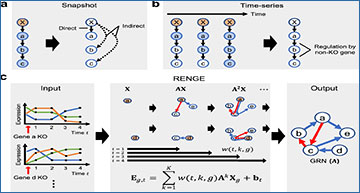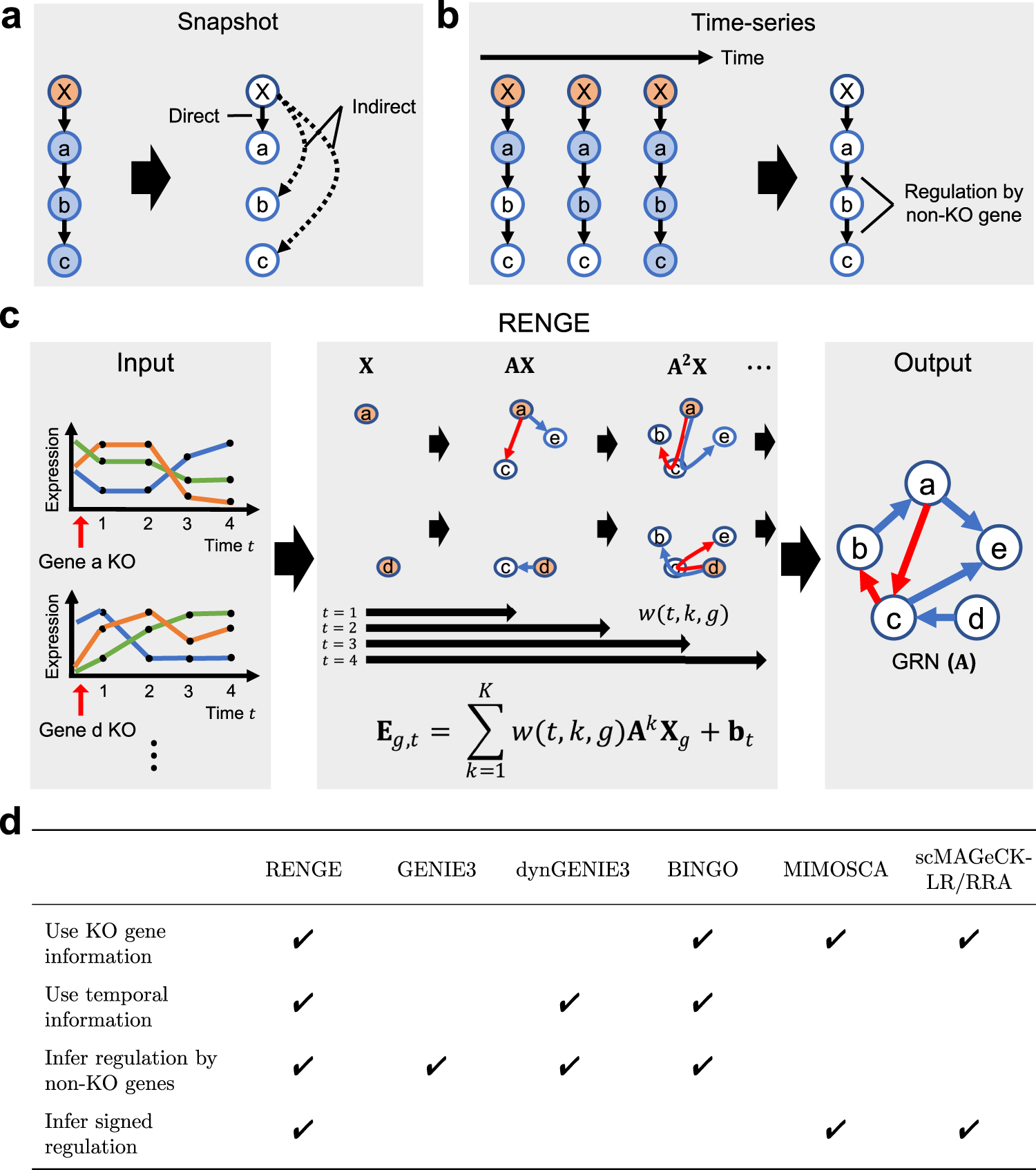Single-cell RNA-seq analysis coupled with CRISPR-based perturbation has enabled the inference of gene regulatory networks with causal relationships. However, a snapshot of single-cell CRISPR data may not lead to an accurate inference, since a gene knockout can influence multi-layered downstream over time. Kyoto University researchers have developed RENGE, a computational method that infers gene regulatory networks using a time-series single-cell CRISPR dataset. RENGE models the propagation process of the effects elicited by a gene knockout on its regulatory network. It can distinguish between direct and indirect regulations, which allows for the inference of regulations by genes that are not knocked out. RENGE therefore outperforms current methods in the accuracy of inferring gene regulatory networks. When used on a dataset the researchers derived from human-induced pluripotent stem cells, RENGE yielded a network consistent with multiple databases and literature. Accurate inference of gene regulatory networks by RENGE would enable the identification of key factors for various biological systems.
Overview of RENGE
a The use of snapshot expression data alone after gene X is knocked out makes it difficult to distinguish direct and indirect regulations. Blue nodes : genes with expression changes due to the KO. b Using time-series expression data after KO, in principle, can enable differentiation of direct and indirect regulations and infer regulation by non-KO genes. c RENGE infers a signed GRN from the time-series expression data after gene KO, obtained by scCRISPR analysis, by modeling the process in which the effects of the gene KO propagate on the network. X denotes the decrease in expression of the target gene due to KO (orange node), AX denotes the expression change due to direct regulation from the KO gene, and A2X denotes the expression change due to indirect regulation via another gene from the KO gene. w(t, k, g) denotes the magnitude of the effect of the k-th order regulation from the KO gene g at time t. d Comparison of methods on different features.
Ishikawa M, Sugino S, Masuda Y et al.(2023) RENGE infers gene regulatory networks using time-series single-cell RNA-seq data with CRISPR perturbations. Commun Biol [Epub ahead of print]. [article]





